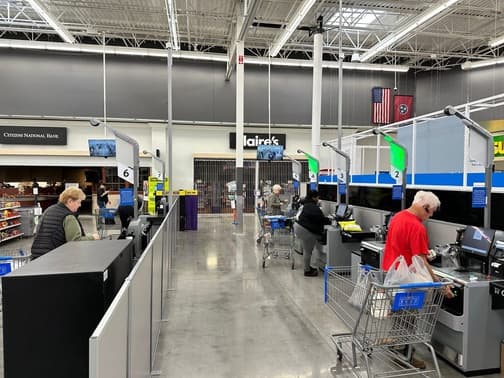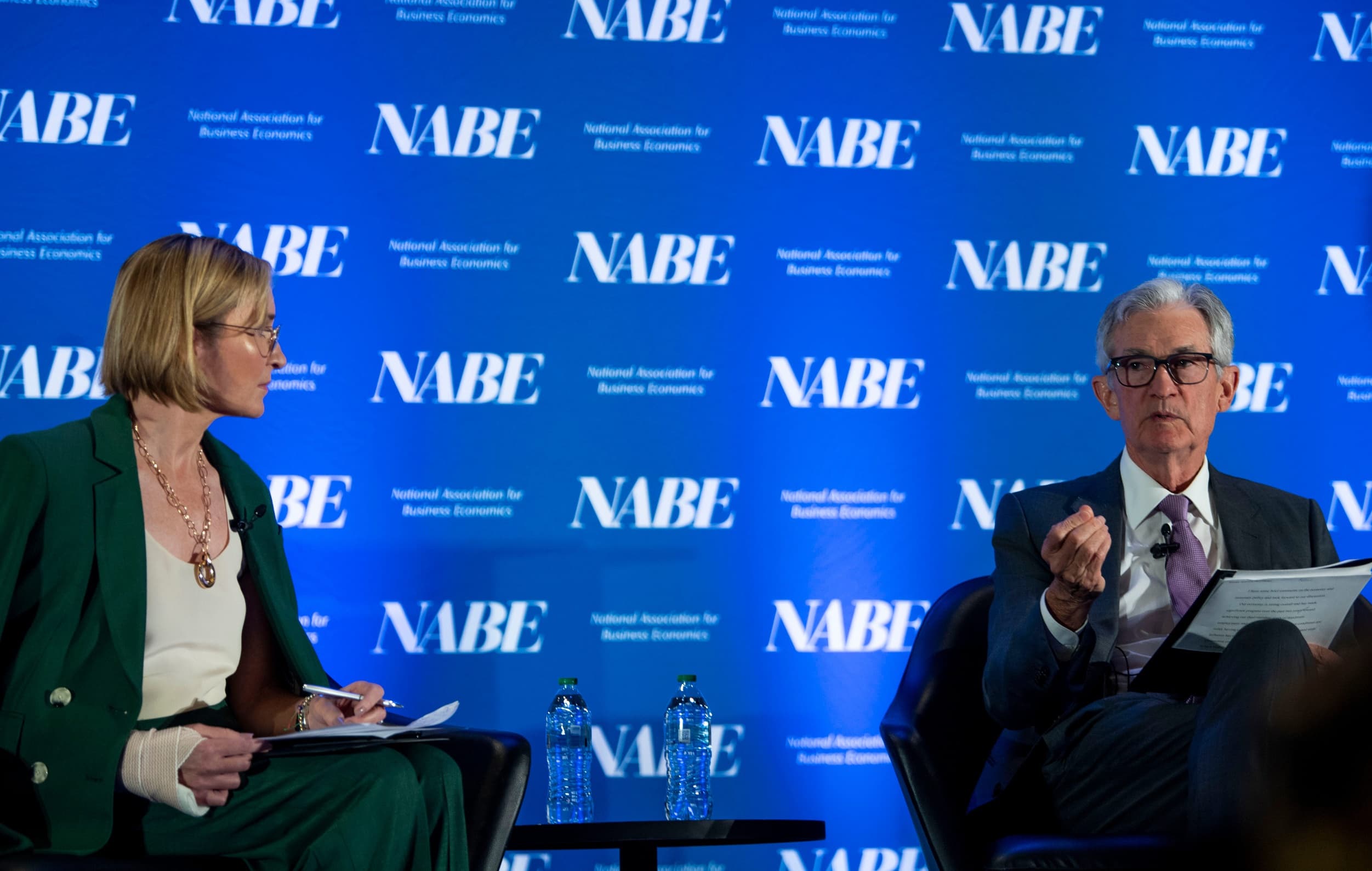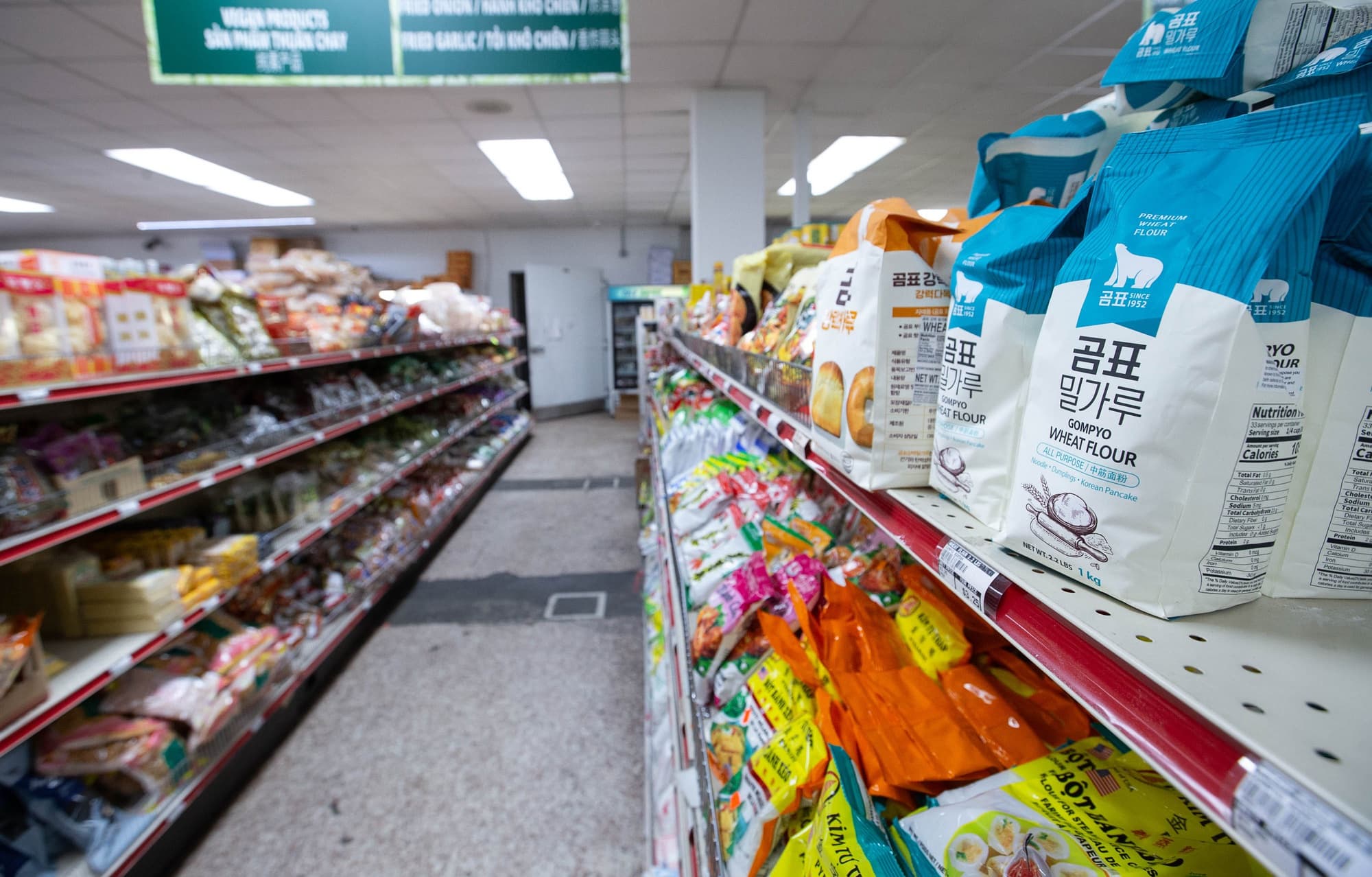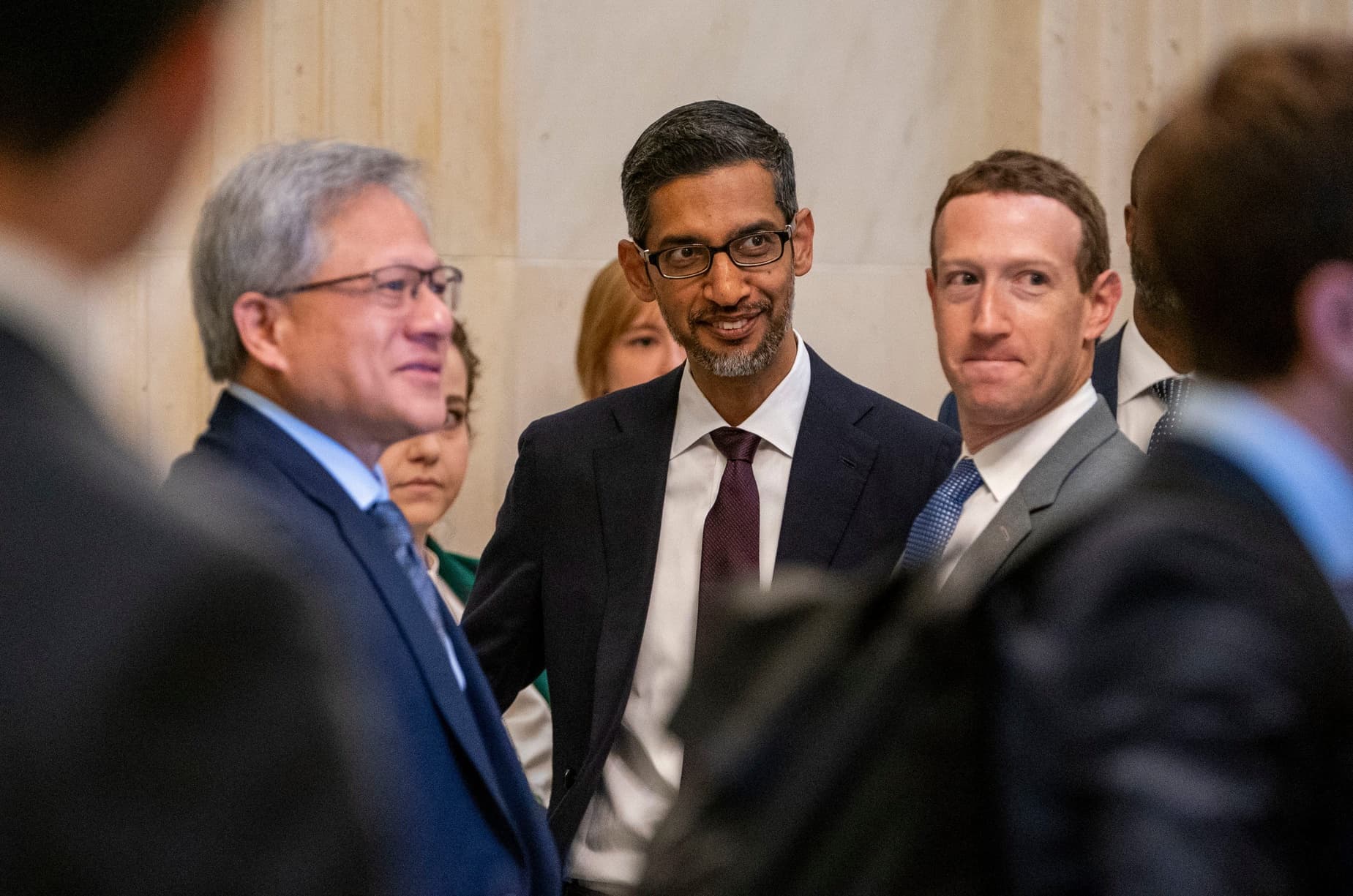Stagflation Looms: Apple, Microsoft, Retail Giants Brace for Impact

Source: Imagn
Jerome Powell, Chair of the Federal Reserve, speaks to the Senate Banking
The Federal Reserve’s May 2025 meeting highlighted stagflation risks, linking them to recent tariffs under former President Trump. By holding interest rates steady, the Fed signaled concerns that inflation (3% YoY in January) and slowing growth could collide.

Source: Imagn
People shopping at Walmart
Stifel’s chief strategist Barry Bannister projects mild stagflation in late 2025, citing parallels to 1970s stagnation. His analysis warns of a 10% stock market correction, driven by slowing retail sales (-1% in January) and stubborn core PCE inflation at 2.75%. This challenges the Fed’s 2% target, suggesting equities face headwinds despite current low unemployment.

Source: Imagn
Ellen Zentner poses questions to Federal Reserve Chair Jerome Powell.
The U.S. economy shrank 0.3% in Q1 2025-its first contraction since 2022-as consumers and businesses front-loaded imports ahead of tariffs. While some dismiss this as a one-off, Morgan Stanley’s Ellen Zentner calls it a “stagflation warning shot,” noting tariffs could prolong weak growth while inflation lingers.

Source: Imagn
ChatGPT said: Asian products face rising costs at market due to tariffs
New 10% tariffs are projected to raise core CPI to 3.8%, adding ~$2,000 annually to household costs. Unlike pandemic-era aid, no fiscal relief is expected this time. Import-reliant sectors like tech and retail face margin pressures, with companies likely to pass costs to consumers, exacerbating inflation despite slower GDP growth.

Source: Imagn
NVIDIA’s Jensen Huang speaks with Google’s Sundar Pichai and Meta’s Mark Zuckerberg
April 2025’s tariff announcements triggered a $2 trillion market selloff. Tech giants Apple (AAPL) and NVIDIA (NVDA) fell 15% and 14%, respectively, while retailers Wayfair (W) and Hasbro (HAS) dropped 12%. Investors fear prolonged supply-chain disruptions and margin erosion, particularly for firms with high Asian manufacturing exposure.
.jpg&w=3840&q=75)
Source: Imagn
Jerome Powell briefs Senate on Fed’s Monetary Policy Report
Chair Powell acknowledged tariffs’ “highly uncertain” economic effects, noting they could mean “higher inflation and slower growth.” With rates stuck at 5.25%-5.5%, the Fed faces a lose-lose choice: cut rates to spur growth (risking inflation) or hold firm (deepening stagnation). Markets now price in just 75 bps of cuts for 2025.
.jpg&w=3840&q=75)
Source: Imagn
Starbucks inside the new Eastside Kroger Marketplace
Retail sales declines and rising inflation expectations hint at weakening demand. A SumUp survey found 85% of businesses still struggle with inflation, with 64% anticipating lower 2025 profits. Firms like Starbucks (SBUX) and Expedia (EXPE), down 17.5% and 10%, reflect consumer hesitancy.
.jpg&w=3840&q=75)
Source: Imagn
A wide range of Nike Dunks in the display
Apparel and footwear companies, including Nike (NKE) and Columbia Sportswear (COLM), face dual pressures from tariffs and softer demand. Similarly, airlines like Alaska Air (ALK) and manufacturers reliant on Chinese imports could see earnings downgrades. Investors are reassessing sectors with low pricing power.
.jpg&w=3840&q=75)
Source: Imagn
Apple dispalys its product
Stagflation threatens to compress price-to-earnings ratios, particularly for growth stocks. Bernstein analysts warn 2025 GDP could slow to 0.5%-1.0% if tariffs persist, raising recession odds. With S&P 500 earnings growth already muted, further multiple contractions may follow if inflation stays above 3%.

Source: Imagn
Customers lining up outside Costco
Investors are hedging with commodities, TIPS, and defensive stocks while reducing exposure to cyclicals. However, history suggests stagflationary periods favor active stock-picking-companies like Costco (COST) and Microsoft (MSFT), which fell only 6%-8% in April’s selloff, may offer relative safety through pricing power and diversified supply chains.